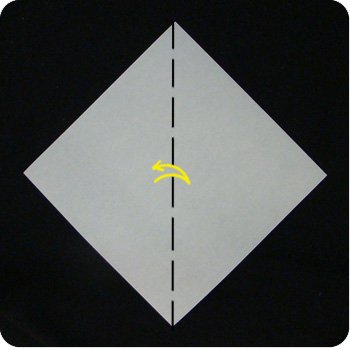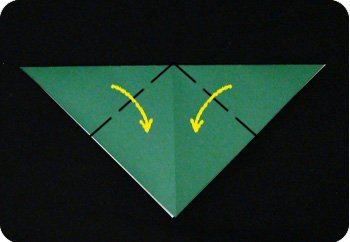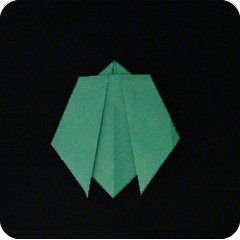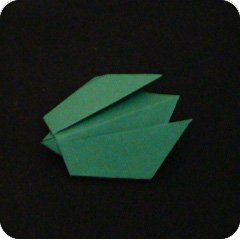This origami bug is a generic bug which you can modify to suite your needs. Use green paper if you want to make an aphid or a green stink beetle. Use yellow paper and a black marker if you want to make a bee or wasp. Use red paper and black marker if you want to make a ladybug. Almost any generic bug can be represented if you use the right color of paper and a bit of decorations with a marker.
Instructions for Easy Origami Bug

Step 1:
Start with a square sheet of paper with the white-side facing up. Position it so it is balanced on one of its corners like a “diamond”. Fold and unfold in half along the diagonals (left to right). |
|
Step 2:
Fold in half (top to bottom). |
|
Step 3:
Fold the left and right corners of the paper down. Position the paper so the tips are a little apart from one another. |
|
|
|
Step 4:
1) Fold down the top to make the head. |
|
Step 5:
Fold the top flap back up. |
|
Step 6:
Turn over and you’re done. |
|
|


Love them or hate them, bugs are everywhere in our lives! Some bugs like ladybugs, praying mantis, and spiders are “beneficial” because they eat other bugs. Other bugs like termites are “undesirable” because they can eat the wood in your house. Ants and cockroaches are annoying because they come in large numbers and they steal our foods. It is interesting that grasshoppers and crickets are “cute” whereas locust are feared because they can strip entire fields of crops. Bees are loved because they make honey; wasp are despised because they can sting repeatedly. Fleas, ticks, mites, and lice are generally disliked because they bite and can cause disease.
Origami bugs are best because they neither bite nor steal; they do not crawl or fly; and you can make as many or as few of them as you like.







